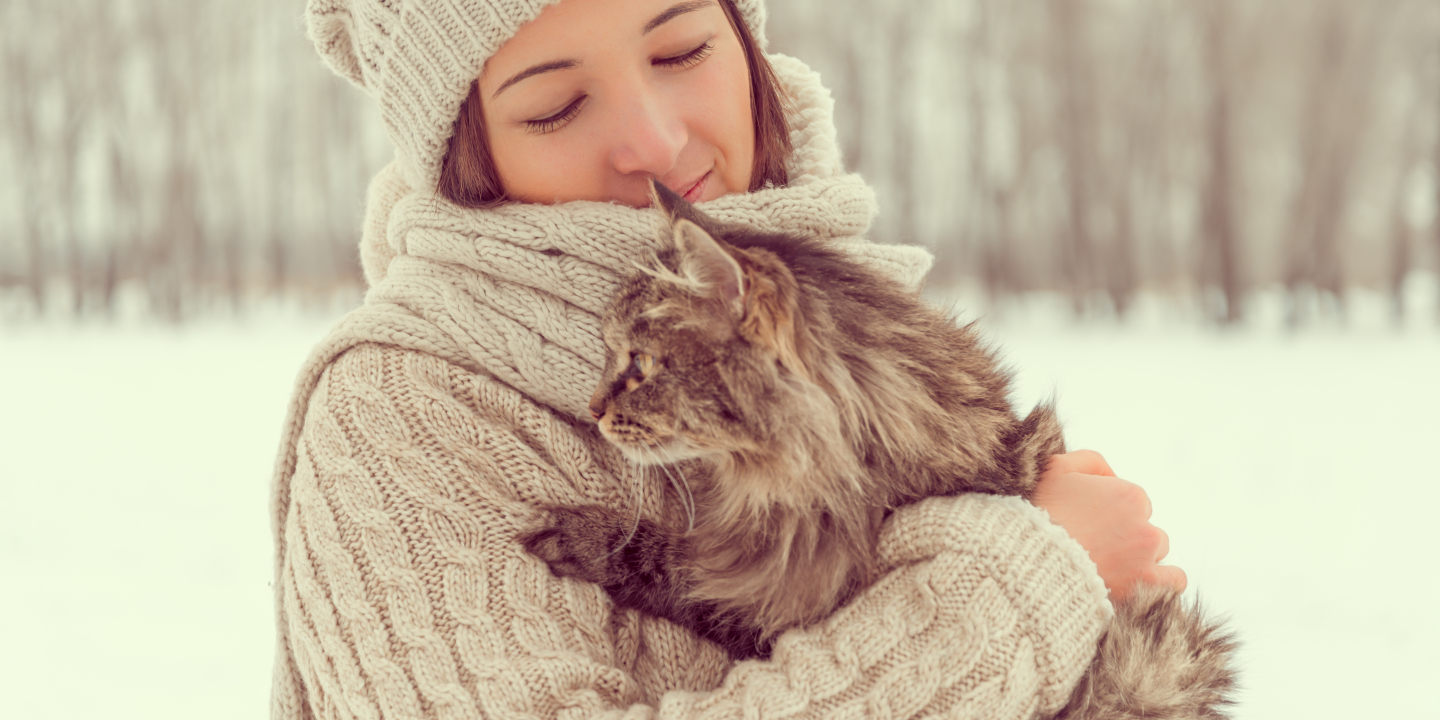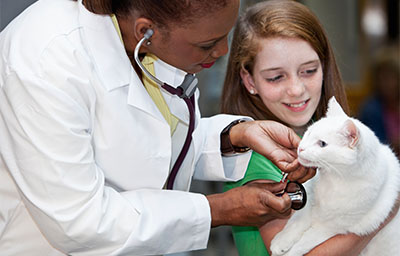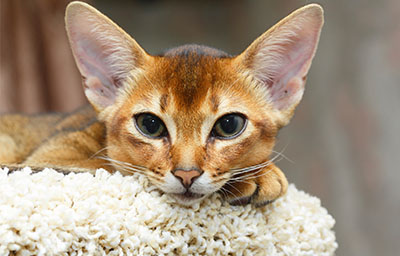Feline Vaccines: Benefits and Risks
Vaccines are preparations that resemble infectious agents like bacteria or viruses but are not pathogenic (disease causing). When administered to an animal, they train the immune system to protect against these infectious agents.
How vaccines work
After vaccination, the immune system is “trained” to recognize infectious agents by producing proteins called antibodies or activating specific cells to kill the agents. When a vaccinated cat encounters these agents in the future, it rapidly generates antibodies and activates the cells that recognize the agents, producing an “immune response” that results in the elimination of the invading agent.
While vaccines represent one of the greatest achievements in preventive medicine, no vaccine is 100 percent effective; and they don’t induce the same degree of protection in every cat. For this reason, exposure of even vaccinated cats to other cats or environments in which infectious agents may be found should still be minimized.
Vaccinating Kittens
Kittens are susceptible to a variety of infections due to their immature immune systems. Vaccination at the appropriate time and minimizing exposure to infectious agents are thus very important, particularly in kittens for which the history of adequate nursing from the mother is unknown. Kittens receive a series of vaccines over a 12 to 16-week period beginning at between 6 and 8 weeks of age. Earlier vaccinations are not effective because kittens ingest beneficial protective antibodies in their mother’s milk during the first few hours after birth, but these antibodies also interfere with their responses to vaccines. The antibodies ingested by a kitten while nursing last only a few weeks, so it is critical to vaccinate kittens at the appropriate time to ensure that they are still protected after the maternal antibodies wane.
Vaccinating Adult Cats
Decisions regarding which vaccines to give adult cats and how often they should be administered are based upon multiple factors, including the risk of a cat’s exposure to various infectious agents, the duration of protection of a given vaccine, the risk of cats passing diseases to humans, and the rather minimal risks inherent to vaccination (primarily allergic reactions in the short term and the development of feline injection site sarcomas in the long term). Adult cats with unknown vaccination status should be treated as unvaccinated, and should receive the full series of vaccines outlined for kittens. Adult cats that are overdue for vaccinations should receive booster vaccines, regardless of the interval since the previous vaccination.
Core vaccines
The American Association of Feline Practitioners Vaccination Advisory Panel recommends that all household cats kept indoors at all times receive the following vaccines:
Panleukopenia (feline distemper): This highly contagious and potentially lethal virus causes fever, vomiting, diarrhea, loss of appetite, and in some cases, sudden death. Kittens are particularly susceptible.
Feline herpesvirus (viral rhinotracheitis): This virus causes upper respiratory infection with fever, sneezing, eye and nasal discharge, conjunctivitis (inflammation of the inner eyelids and mucous membranes around the eyes), inflammation of the cornea (keratitis), and lethargy. Kittens have an increased risk of infection.
Calicivirus: This highly contagious and ubiquitous virus is one of the major causes of upper respiratory infection in cats. Affected cats may have sneezing, eye and nasal discharge, conjunctivitis, lethargy, loss of appetite, sores on the gums and soft tissues of the oral cavity, and lameness. In some cases, affected kittens may develop pneumonia. In rare cases, a much more virulent strain of this virus can cause inflammation of the liver, intestines, pancreas, and cells that line the blood vessels. This severe form of calicivirus can be deadly in up to half of affected cats.
Rabies virus: This deadly viral infection most commonly spreads through bite wounds, but can also be transmitted to any mammal by exposure of an open wound to the saliva of an infected animal. Skunks, raccoons, coyotes, foxes, and bats are the most common wild carriers in North America. Humans are at risk of infection if bitten by an infected animal or if the saliva of an infected animal comes into contact with an open wound. Rabies is routinely fatal once symptoms develop.
Feline Leukemia Virus (FeLV): The leading cause of virus-associated deaths in cats, FeLV spreads through the saliva, nasal secretions, feces, urine, and milk of infected cats. Casual contact, bite wounds, and nursing can all transmit the infection. Roughly 50 % of cats diagnosed with FeLV succumb to the disease within two and a half years. Infected cats may suffer from anemia, immune suppression, and cancer. FeLV vaccination is considered a core vaccine for all cats less than one year of age and a non-core vaccine for cats one year of age and older that have no potential for exposure to FeLV-infected cats or cats of unknown FeLV status.
Non-core vaccines
The decision to vaccinate a cat with a specific non-core vaccine involves a careful assessment of the cat’s lifestyle, age, health status, exposure to other cats (and the health of these cats), vaccine history, and, in some cases medications that the cat is being treated with. With the understanding that all treatment is associated with some risk, the vaccine-specific risk must be weighed against the potential benefit that is unique to each cat’s situation.
A cat may need additional vaccines depending on its risk of exposure to infectious organisms due to outdoor access, living in a shelter, or being housed in a home with infected cats. Consult your veterinarian to determine if any of these may be appropriate for your cats.
Feline Immunodeficiency Virus (FIV): This viral disease can compromise the immune system, predisposing cats to a variety of other infectious diseases. It is spread primarily via the saliva of infected cats through bite wounds, so transmission among socially compatible cats is rare. Cats that venture outside, where aggression among cats is more likely to occur, are at risk. FIV vaccines are generally not as effective as most other vaccines, and it is difficult to distinguish between a new infection and previous vaccination. FIV vaccines are no longer commercially available in North America.
Bordetella bronchiseptica (kennel cough): This highly prevalent bacterium is a common cause of upper respiratory infections, which can cause sneezing, discharge from the eyes and nose, and sometimes a cough. Cats can be infected by direct contact with nasal and oral secretions of infected cats or dogs. B. bronchiseptica thrives when cats are densely housed, such as in shelters and multiple cat households, and this vaccine is a tool to help control the spread of infection in these situations.
Chlamydia felis: This bacterium can cause conjunctivitis and upper respiratory infections in cats. The vaccination can help control the spread of the bacterium in multiple cat environments where verified infections have occurred.
Feline Infectious Peritonitis (FIP): This almost universally fatal viral disease stems from a mutant form of the relatively benign feline coronavirus. The mutation occurs within the individual cat and there is scant evidence that the deadly FIP form of the virus spreads efficiently between cats, although recent shelter outbreaks suggest that transmission of the lethal FIP form can occur under certain conditions. Most studies indicate that vaccination against FIP is not effective, so FIP vaccination is not usually recommended.
Dermatophytosis (ringworm): These fungal infections, which cause hair loss and inflammation of the skin, spread to both dogs and humans through direct contact. Vaccines against the fungal species that cause ringworm are ineffective in cats, and are not recommended.
Updated July 2022






